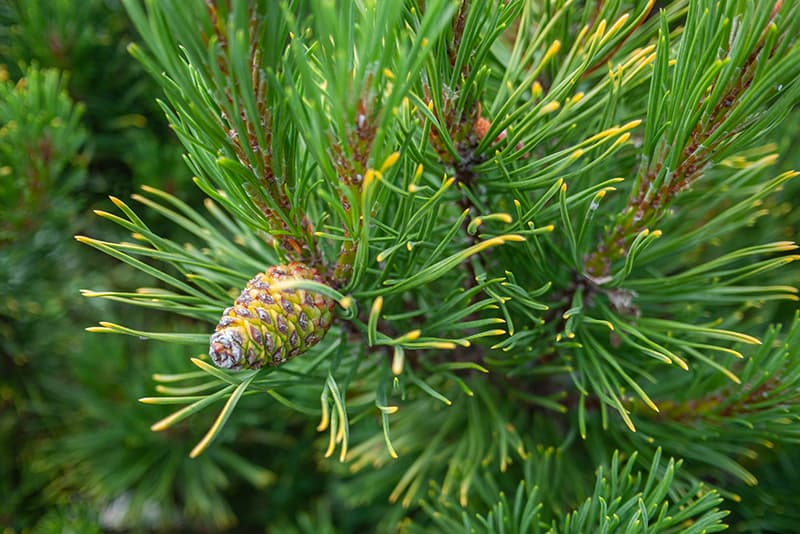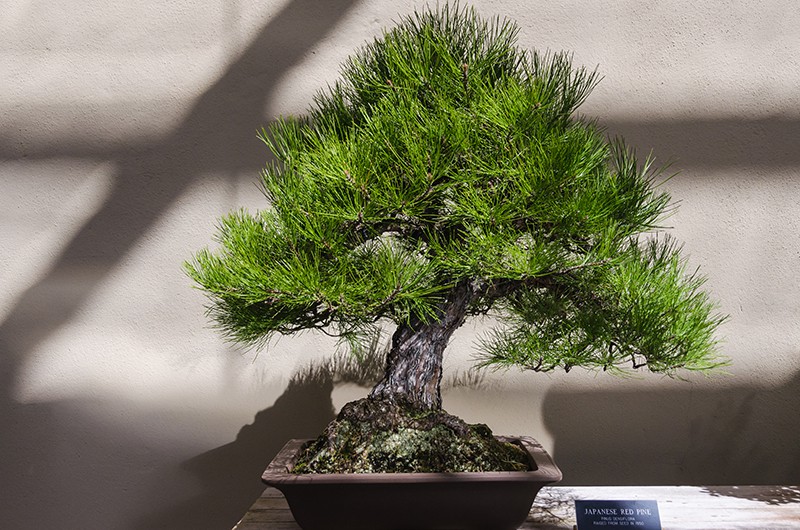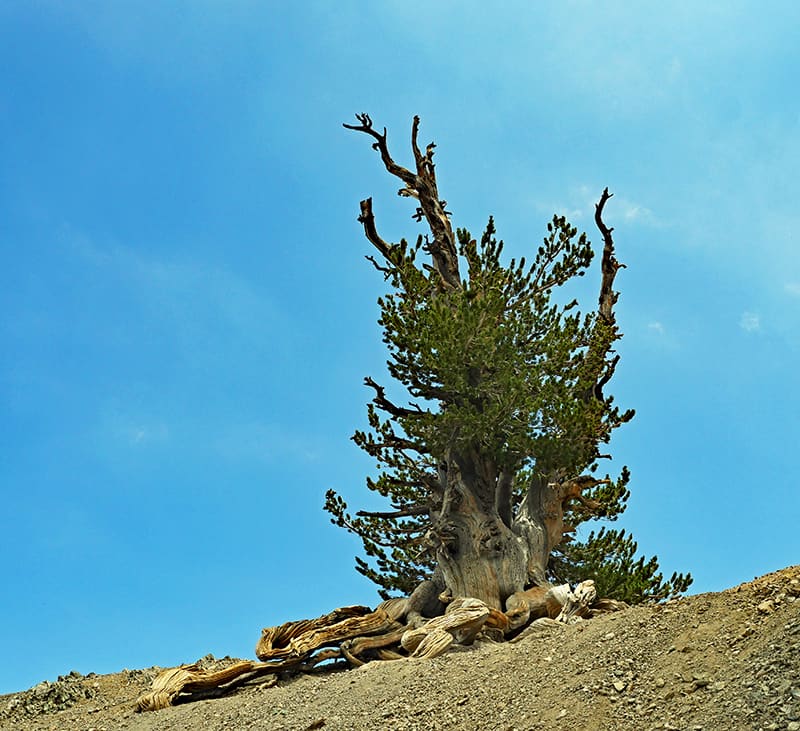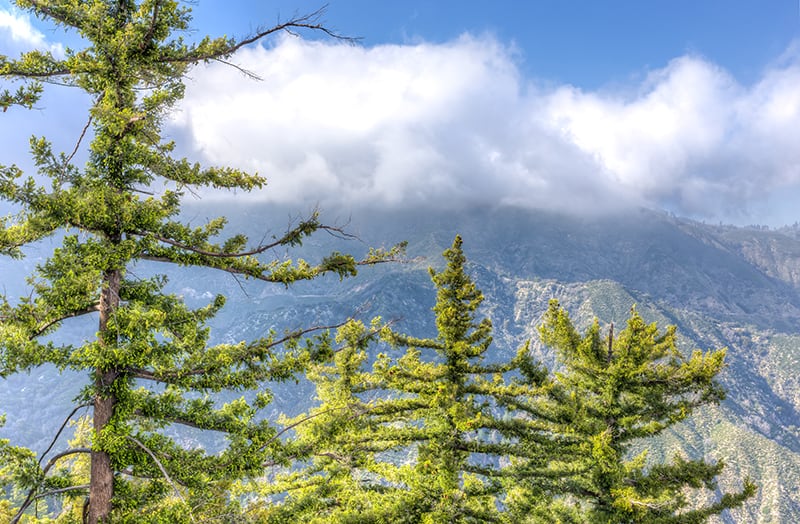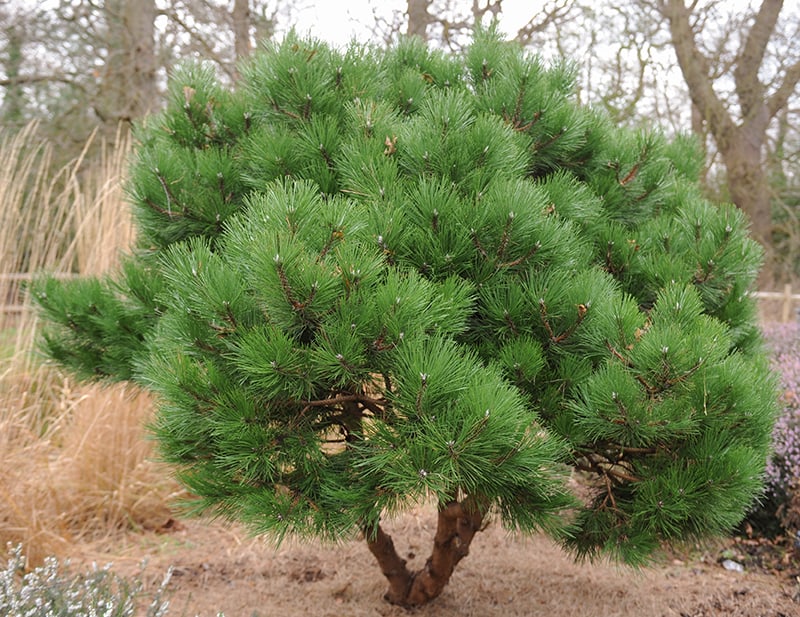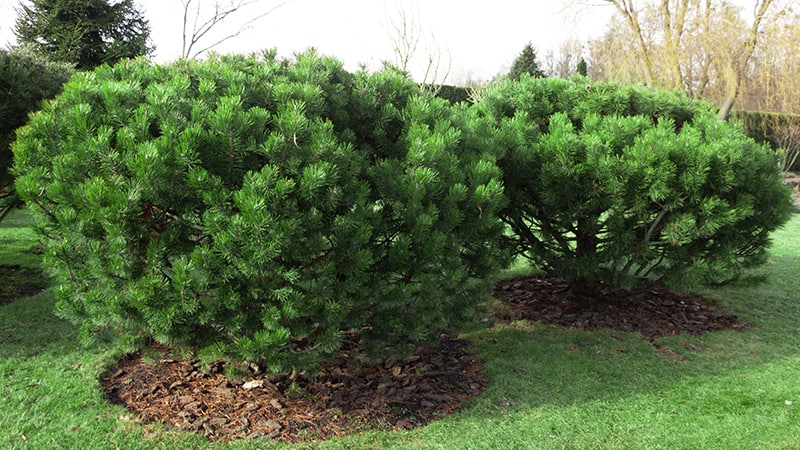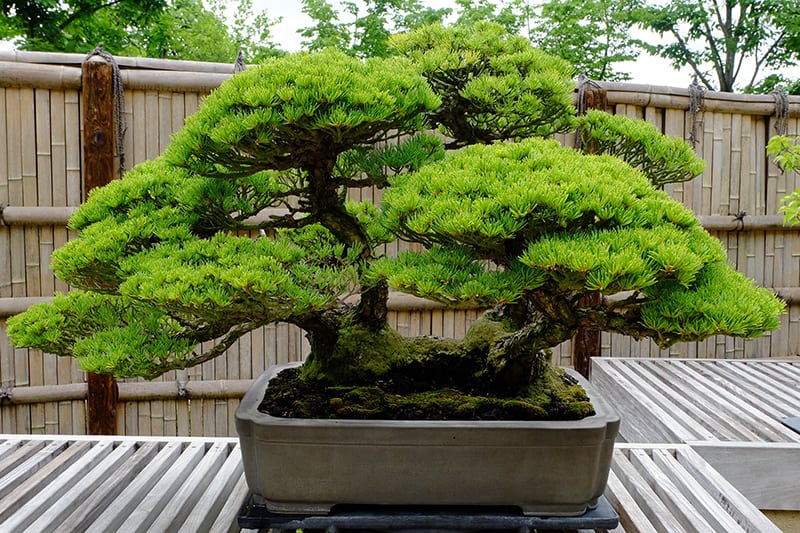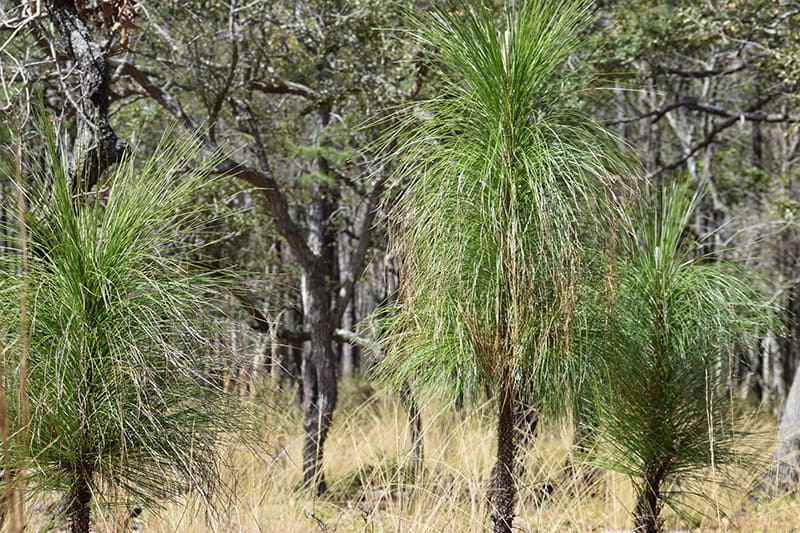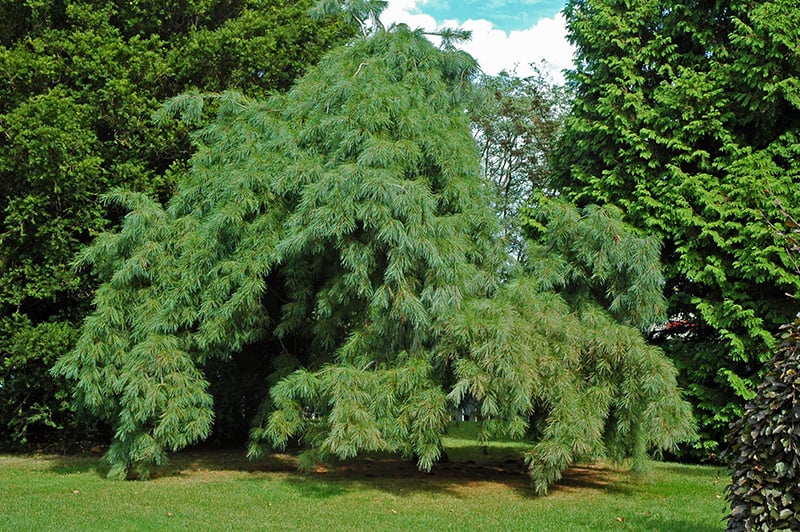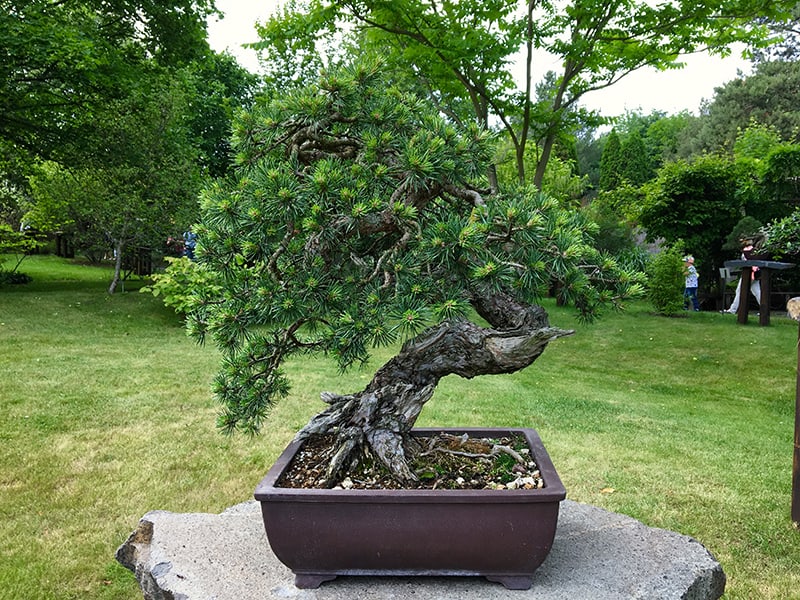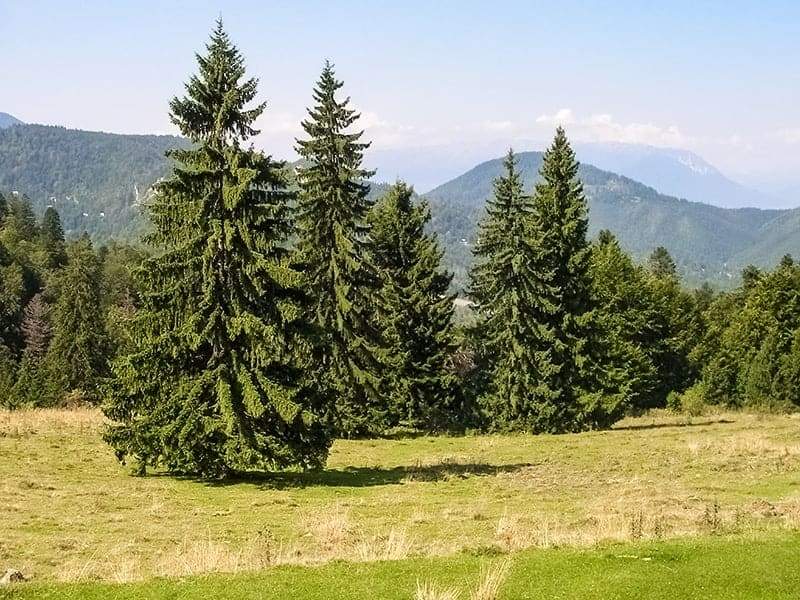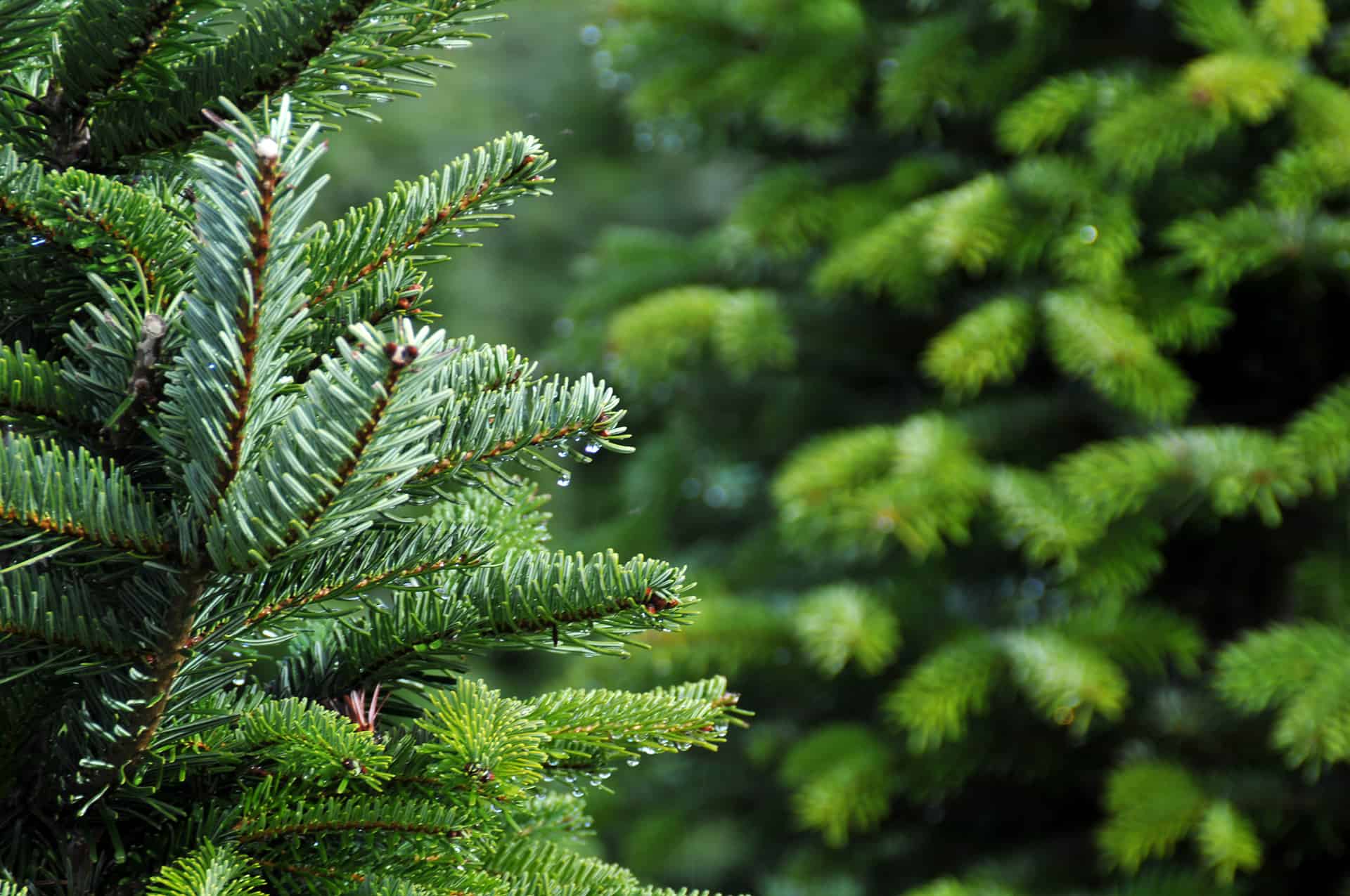- Home >
- Pine Trees
Pine Trees for Sale - Buying & Growing Guide
Do You Know Your Growing Zone? i Growing zones help determine if a particular plant is likely to grow well in a location. It identifies the average annual minimum winter temperatures across the U.S. provided as a map by the USDA.
10 Results
-
Growing Zone(s): 4-8$34.95
-
Growing Zone(s): 2-8$154.95
$164.95Save up to 6% -
Growing Zone(s): 6-10$164.95
$199.95Save up to 17% -
Growing Zone(s): 4-11 / 9-11$144.95
-
Sold OutGrowing Zone(s): 3-8$34.95
-
Sold OutGrowing Zone(s): 9-11$59.95
-
Sold OutGrowing Zone(s): 5-8$99.95
-
Sold OutGrowing Zone(s): 8-10$59.95
-
Sold OutGrowing Zone(s): 8-10$107.95
-
Sold OutGrowing Zone(s): 4-7$89.95
Pine Trees – Buying & Growing Guide
There are more than 100 species of pine trees across the globe ranging from short, tidy shrubs, to tall trees touching the sky. They are all evergreen, and all have cones, but they differ greatly in size and shape. Many pines are drought-resistant and easy to grow, making them well suited to the suburban landscape.
How to Grow Pine Trees
How to plant pine trees
Pine trees like full sun, thriving on six to eight hours a day, and soil that drains well. When planting more than one pine tree, space them out as shown on the plant tags. They need a lot of room so they won’t be crowded when grown. Pine trees can handle windy areas, but they need protection for the first year.
Dig a hole twice as wide as the pine tree’s root ball and a little deeper. Dig some compost or leaf mold into the bottom of the hole. Unwrap or unpot your tree, and tease out the roots till they are loose and not packed tightly. Place the pine tree in the hole keeping the top of the root ball even with ground level. Fill the hole with enhanced composite or another organic material.
Water your pine sapling generously. Mulch around it’s base with tree bark or leaf mold keeping the mulch away from the trunk. Support the pine tree for the first year with two or three short stakes placed about a foot away from it.
How to achieve maximum results
With more than 100 species of pine trees varying in height from 4 to 250 feet tall, picking the site for maximum results is important. A majestic ponderosa pine will overwhelm a quarter-acre backyard. Siting your tree properly will make the difference between success and failure for your sapling. Pine trees make great windbreaks but when planted in a windy spot, protect the pine for the first year by wrapping in burlap during the winter.
How to Care for Pine Trees
Watering and nutrients
When newly planted, your pine tree will need water every few days. Once it is established and growing you can taper off on watering. Pine trees are drought-resistant, and only need supplemental watering in the driest of conditions.
You won’t need to fertilize your pine tree in the first year after you planted it, especially if you dug some compost into the soil around the root ball. In later years an annual spring feeding with a balanced, 10-10-10 fertilizer is recommended.
Pollination
Most pine trees are monoecious, so a single tree will have both male and female cones. Once the male cones open wind distributes the pollen. Birds and other animals play a role in the pollination of some pine species too..
Pruning
Unlike some ornamental trees, pines don’t need regular pruning. In the spring, survey your tree and trim off any branches that are broken or diseased. You can also trim any branches that mar the form of the tree. Trim lightly, a heavy pruning can damage or kill your pine. Never prune your pine tree in the fall or winter as this can cause stunted growth.
Pests and diseases
Pine trees have their share of insect pests, including aphids, borers, and mealybugs. Bark beetles may also burrow into the bark of your pine tree. When healthy the pine should be able to repel light invasions of any pest. Insecticidal soaps or oils help. Your county extension agent is a great source of information on pests and diseases prevalent in your area, and how to handle them.
Canker disease can impact pine trees, causing large patches of dead tissue on branches or trunks. The best way to deal with this is to purchase canker-resistant varieties of pine trees. You can prune out small areas of canker, but if it infested the trunk, the tree will not survive. Other diseases include rust, annosus root rot, and brown spot needle blight.
Types of Pine Trees
1. Jack Pine
Scientific Name: Pinus banksiana
Mature Size: Up to 70 feet tall
USDA Hardiness Zone: 3-8
Light: Full sun
Water: Average moisture needs
Soil: Well-draining
This pine tree, also known as scrub pine and gray pine, is native to North America. It grows naturally across the eastern portion of Canada, as well as some of the eastern United States and is known for being very hardy. It is an evergreen conifer that is typically a small to medium-sized tree, but sometimes takes the form of a shrub in poor growing conditions. The tree has an irregular shape, with a crooked and bent trunk and asymmetrical crown. The foliage of the tree is needle-like and has an evergreen color. Cones are pale brown or gray when mature, with a curved tip. The tree has evolved to become adapted to fires, and its cones will remain closed for many years until they are exposed to extreme heat, such as in a forest fire. The cones will then disperse seed to self-sow on the burnt ground.
This is an easy tree to grow that is tolerant of a wide range of soil types, including clay soil and sandy soil. It can also tolerate dry conditions, though it performs best in well-draining, moderately moist soils.
2. Shore Pine
Scientific Name: Pinus contorta
Mature Size: Up to 160 feet tall
USDA Hardiness Zone: 6-8
Light: Full sun
Water: Average moisture needs
Soil: Well-draining, acidic
Cultivars and Varieties: Pinus contorta ‘Chief Joseph’, Bolander’s Beach Pine-Pinus contorta subsp. Bolanderi, Tamarack Pine-Pinus contorta subsp. Murrayana, Lodgepole Pine-Pinus contorta subsp. latifolia
This pine tree is native to North America, where it commonly grows in dry mountain regions or along the coastline, hence the common name of ‘shore pine.’ This tree is also known as ‘twisted pine,’ owing to its trunk and branches that take an unusual, contorted shape. This is often a result of ocean winds that sculpt the tree in a particular way. The tree’s foliage is needle-like and glossy and can vary in color between varieties, from yellow-green to deep, dark green. The cones of the tree have a copper tint and remain sealed tightly shut until exposed to high temperatures.
This tree is predominantly cultivated for its ornamental beauty, and it is the provincial tree of Alberta in Canada. It is tolerant of salt and high winds and thrives in well-draining soils that are slightly acidic.
3. Whitebark Pine
Scientific Name: Pinus albicaulis
Mature Size: Up to 90 feet tall
USDA Hardiness Zone: 2-8
Light: Full sun
Water: Average moisture needs
Soil: Well-draining, acidic
This tree is native to mountain ranges in the western United States and Canada and is known as the whitebark pine because of its bark that is a gray-white color. This bark is smooth when the tree is young, but it becomes scaly as it matures. The trunk of the tree can be straight, but can also become twisted and misshapen as a result of strong winds and other harsh climate conditions. The foliage of this tree is needle-like, with each needle measuring up to three inches long. They can vary in color from gray-green to yellow-green. The cones of this pine tree are oval and are red or purple. They remain closed for long periods of time and only open to disperse seeds when disturbed by animals. A bird called Clark’s nutcracker routinely breaks open the cones to harvest the seeds, and this is the main way the cones are opened. They also provide an important source of food for mountain wildlife, such as grizzly bears.
This is an especially hardy tree that is known to thrive in harsh climates where few other plant species will survive. It is tolerant of drought, snow, wind, and extreme cold. These trees can become dwarfed in unfavorable conditions, and perform best in well-draining soils that are acidic. This is an endangered species, and efforts are being made to conserve the existing whitebark pine population.
4. Japanese Red Pine
Scientific Name: Pinus densiflora
Mature Size: Up to 110 feet
USDA Hardiness Zone: 4-7
Light: Full sun
Water: Average moisture needs
Soil: Well-draining, acidic
Cultivars and Varieties: Pinus densiflora ‘Low Glow’
This pine tree is native to China, Japan, the Korean peninsula, and a small part of Russia. It is also known as the Korean red pine tree and has become popularly cultivated for its ornamental beauty. The tree takes a graceful shape with a straight trunk and horizontal branches that extend outwards in a twisting and contorted fashion. The crown is dome-shaped, and bark is red-brown, which becomes papery and exfoliates with age. The foliage of the tree is needle-like, with upright pointing clusters of pale green needles forming at the tips of branches and twigs. The cones of the tree are also decorative, arriving in golden tan clusters.
This tree is very popular as a specimen tree, and also as a bonsai tree in Asian gardens. It is also widely cultivated in Japan for its timber. The tree grows well in full sun but will tolerate some afternoon shade in hot climates. It is easy to grow and performs best in well-draining soils that are slightly acidic. Moist soil is best, but the tree can tolerate short periods of drought.
5. Limber Pine
Scientific Name: Pinus flexilis
Mature Size: Up to 80 feet tall
USDA Hardiness Zone: 4-7
Light: Full sun
Water: Average moisture needs
Soil: Well-draining
This tree is native to Canada, Mexico, and the United States, with its largest range being in the Rocky Mountains. Its name comes from the fact that the branches of the tree are flexible. In ideal conditions, the tree can grow up to 80 feet, though it is more frequently seen at around 60 feet, and in windswept areas, the trees rarely exceed 10 feet in height. The bark of this tree is dark gray, and the foliage is blue-green in a needle-like form. The trunk can be straight or contorted depending on the growing conditions, and branches are upwards pointing. The tree silhouette has a flat top. The cones of this tree are large and thick, measuring around eight inches long.
These are vibrant green when young and brown when mature. The seeds provide a valuable food source for both birds and squirrels. The tree is widely cultivated for its ornamental value, and also for use as a Christmas tree. It has a good tolerance for drought and is also popularly used as a windbreak. The tree performs best in well-draining soil but is adaptable to a wide range of soil types. This is a long-lived tree, with some specimens being documented as being 2000 years old.
6. Sugar Pine
Scientific Name: Pinus lambertiana
Mature Size: Up to 250 feet
USDA Hardiness Zone: 7-9
Light: Full sun
Water: Average moisture needs
Soil: Well-draining
This tree is native to mountain ranges throughout the Pacific coastline of the United States. It is regarded as the tallest of all pine trees, with the largest known specimen measuring over 273 feet tall and growing in Yosemite National Park. More commonly, this tree grows to heights ranging from 130 to 200 feet tall. It also produces the longest cones of any conifer tree, with seed cones measuring up to 20 inches long. The cones contain edible seeds that are similar to pine nuts.
As a young tree, the sugar pine has a narrow pyramid shape. As it grows taller, much of the straight trunk can be seen as its branches are widely spaced out, leaving most of the trunk bare. The branches of the tree are wide-spreading and horizontal or pendulus. The foliage of the tree is needle-like, with clusters of dark blue-green needles that can individually be as long as four inches. This tree is long-lived and grows best in well-draining soil in full sun.
7. Bosnian Pine
Scientific Name: Pinus heldreichii
Mature Size: Up to 110 feet
USDA Hardiness Zone: 6-8
Light: Full sun
Water: Average moisture needs
Soil: Well-draining
Cultivars and Varieties: Pinus heldreichii ‘Compact Gem’, Pinus heldreichii ‘Malinki’, Pinus heldreichii ‘Schmidtii’
This evergreen pine tree is native to the mountain ranges of southern Italy and the Balkans and is the symbol of the Pollino National Park in Italy. The foliage of the tree is needle-like, with each needle measuring up to four inches long, and growing in small bundles. The cones are long and slender, measuring between two and four inches long. They are a purple-blue color when they emerge, making the tree very decorative, but they develop to brown when mature. The seeds of the cones are dispersed by the wind. This tree is popular in parks as it is ornamental and has a steady growth rate. There are several cultivars that produce compact and dwarf versions of the tree that are suitable for growing in small to average-sized gardens.
This tree is known to be the oldest living tree in Europe, with some examples being over 1300 years old. This is an adaptable tree that thrives in a range of growing conditions. It is tolerant of wind, drought, pollution, ice, and snow, and adapts well to a range of soil types including sandy or clay soils. It is also less susceptible to pests than many other types of pines. It thrives in full sun in moist and well-draining soil.
8. Austrian Pine
Scientific Name: Pinus nigra
Mature Size: Up to 180 feet tall
USDA Hardiness Zone: 5-8
Light: Full sun
Water: Average moisture needs
Soil: Well-draining
Cultivars and Varieties: Pinus nigra ‘Helga’, Pinus nigra ‘Komet’, Pinus nigra ‘Green Tower’, Crimean Black Pine-Pinus nigra subsp. nigra var. Pallasiana, Pyrenean Pine-Pinus nigra subsp. salzmannii var. Salzmannii, Turkish Black Pine-Pinus nigra subsp. nigra var. Caramanica, Italian Black Pine-Pinus nigra subsp. nigra var. italica
Also known as black pine, this tree is native to the Mediterranean region, from Spain across to North Africa, and it has become naturalized across some of the United States midwest. It is predominantly found in scrublands, forests, and woodland areas, typically at around 6000 feet above sea level. The tree takes a conical shape and grows at a moderately fast rate of around 20 inches per year. The foliage is needle-like, in deep dark green. The bark of the tree is considered an ornamental aspect of the Austrian pine. It is thick and scaly, more so on older specimens, and can range in color from gray to pink or yellow. The seed cones are conical, and emerge in bright green but develop to gray-brown or yellow-brown as they age.
The tree is widely cultivated as an ornamental tree throughout Europe, the United States, and Canada. It is noted for its resistance to salt spray, extreme winds, pollution, and frost hardiness. It is also cultivated for its timber that is used in general construction and to produce paper. The tree thrives in full sun, in a well-draining and moist soil. It can withstand drought once mature, and adapts well to clay soils but will not tolerate shade or soils that are heavy in limestone.
9. Dwarf Mountain Pine
Scientific Name: Pinus mugo
Mature Size: Up to 60 feet tall
USDA Hardiness Zone: 3-7
Light: Full sun
Water: Average moisture needs
Soil: Well-draining
Cultivars and Varieties: Pinus mugo ‘Slowmound’, Pinus mugo ‘Humpy’, Pinus mugo ‘Ophir’, Pinus mugo ‘Gnom’
This tree is native to Europe, growing in the subalpine zone of mountain ranges across France, Spain, Italy, Germany, Poland, and the Balkan Peninsula. It has become naturalized in Denmark, where it was widely planted to help with the erosion of sand dunes, but it has since become an invasive species. It is also considered invasive in other parts of Scandinavia, and in New Zealand. The foliage of the tree takes the shape of dark green needles that can measure up to three inches long. Cones are scaly and deep brown, measuring between one and two inches in length.
This is a popularly cultivated tree in home gardens, especially the cultivars that exist with height expectancies of between two and six feet. Several of these cultivars, such as ‘Ophir,’ have received the Award of Garden Merit from the Royal Horticultural Society. Dwarf Mountain Pines grow easily, adapting to a range of soils, including clay, sandy, acidic, or alkaline. They are also drought-tolerant but perform best in moist and well-draining soils.
10. Japanese White Pine
Scientific Name: Pinus parviflora
Mature Size: Up to 80 feet tall
USDA Hardiness Zone: 6-9
Light: Full sun
Water: Average moisture needs
Soil: Well-draining
Cultivars and Varieties: Pinus parviflora ‘Goldilocks’, Pinus parviflora ‘Bonnie Bergman’, Pinus parviflora ‘Hagoromo Seedling’, Pinus parviflora ‘Adcock’s Dwarf’, Pinus parviflora ‘Glauca’, Pinus parviflora ‘Tempelhof’
This tree is native to Japan and Korea. It takes a broad conical shape, typically growing as wide as it is tall. This evergreen conifer has a dense growth habit, with needle-like foliage appearing in clusters, and each needle measuring around two inches long. The cones are small but chunky, with rounded scales. This tree is commonly cultivated across Asia in parks and gardens and is also popularly used as a bonsai tree. Many cultivars exist that are also loved by home gardeners across North America and Europe, including ‘Glauca’ and ‘Bonnie Bergman’, which have received the Award of Garden Merit from the Royal Horticultural Society.
These trees thrive in full sun and moist, well-draining soils. They will tolerate drought once established, but cannot tolerate high levels of heat or humidity.
11. Longleaf Pine
Scientific Name: Pinus palustris
Mature Size: Up to 100 feet tall
USDA Hardiness Zone: 7-10
Light: Full sun
Water: Low moisture needs
Soil: Well-draining, acidic
This evergreen conifer is native to the Southeastern United States and is the official state tree of Alabama. It has a straight trunk and short branches, from which needle-like foliage appears in small, dense clusters. The needles are noted for being exceptionally long, with each needle measuring up to 14 inches. The cones are also large, with the most sizable seed cones of any native North American pine tree. These are typically between six and ten inches long and can remain on the tree for many years. The tree is very slow-growing when young. It will remain as a grass-like tuft on the ground for up to seven years after germinating, but will then take on a steadier growth rate. It can take as long as 150 years to reach its full height, with a life expectancy of around 500 years.
It was once popularly cultivated for its timber but has since been replaced with faster growing trees. It is cultivated along coastlines and has edible seeds that can be enjoyed raw or when roasted. The tree is especially drought-tolerant and can survive with no watering it all. It thrives in full sun in well-draining and acidic soil types.
12. Eastern White Pine
Scientific Name: Pinus strobus
Mature Size: Up to 230 feet tall
USDA Hardiness Zone: 4-9
Light: Full sun
Water: Average moisture needs
Soil: Well-draining
Cultivars and Varieties: Pinus strobus ‘Pendula’, Pinus strobus ‘Nana’, Pinus strobus ‘Blue Shag’, Pinus strobus ‘Tiny Kurls’
Also known as the soft pine and northern white pine, this tree is native to the eastern portions of North America. It grows naturally from the Appalachian Mountains up to Newfoundland in Canada and the Great Lakes region near Manitoba. It is the official state tree of both Maine and Michigan. It was introduced to much of central and eastern Europe where it has become naturalized. The foliage of this tree is blue-green and takes the shape of flexible needles. The cones are long and narrow, typically measuring between three and six inches long. They have rounded scales, with seeds that get dispersed by wind. It can grow to 230 feet in height and is regarded as the tallest tree in eastern North America.
It is widely cultivated in parks as a fast-growing landscape tree. It is also grown for its timber, and for use as Christmas trees, being especially popular among people with allergies as the trees produce no aroma. The tree is tolerant of a wide range of soil types but thrives in well-draining, moist soils.
13. Scotch Pine
Scientific Name: Pinus sylvestris
Mature Size: Up to 110 feet tall
USDA Hardiness Zone: 3-7
Light: Full sun
Water: Average moisture needs
Soil: Well-draining
Cultivars and Varieties: Pinus sylvestris ‘Glauca’, Pinus sylvestris ‘Beuvronensis’, Pinus sylvestris ‘Gold Coin’, Pinus sylvestris ‘Frensham’
This tree is native to Europe and is the national tree of Scotland. It has a conical shape when young, developing into a widely branched umbrella-shaped canopy when mature. It produces blue-green needle-like foliage that becomes yellow-green in winter. The cones point back towards the trunk and are red at first, developing to gray-brown after they have been pollinated. The tree is popularly cultivated for use as a Christmas tree, and it is also grown for its timber that is used in general construction work. It is also popularly cultivated in parks and gardens, with several cultivars having received the Award of Garden Merit from the Royal Horticultural Society. It thrives in cool summer climates and adapts well to a range of soil types. It cannot tolerate high levels of heat and humidity.











